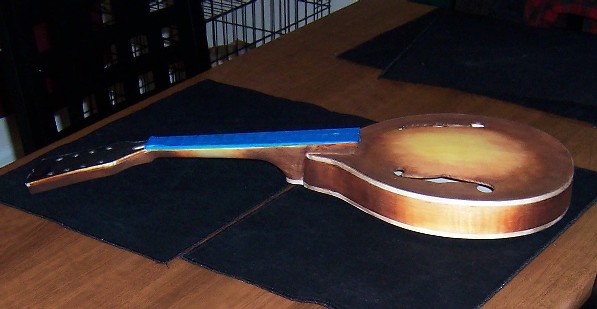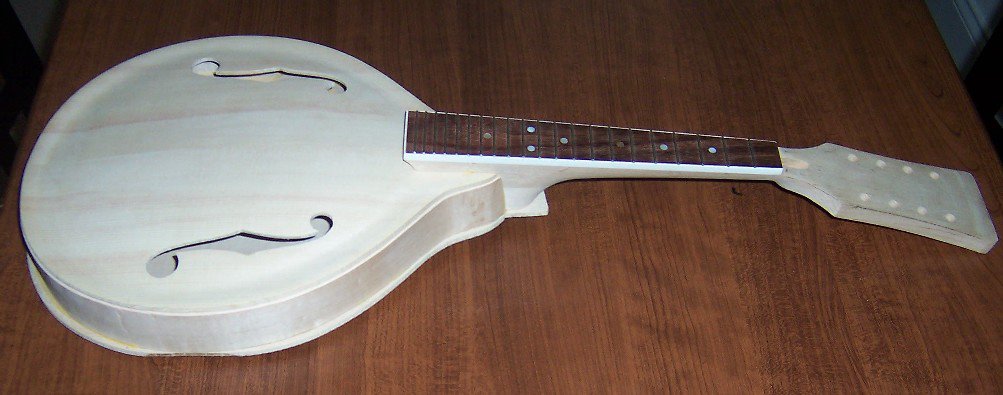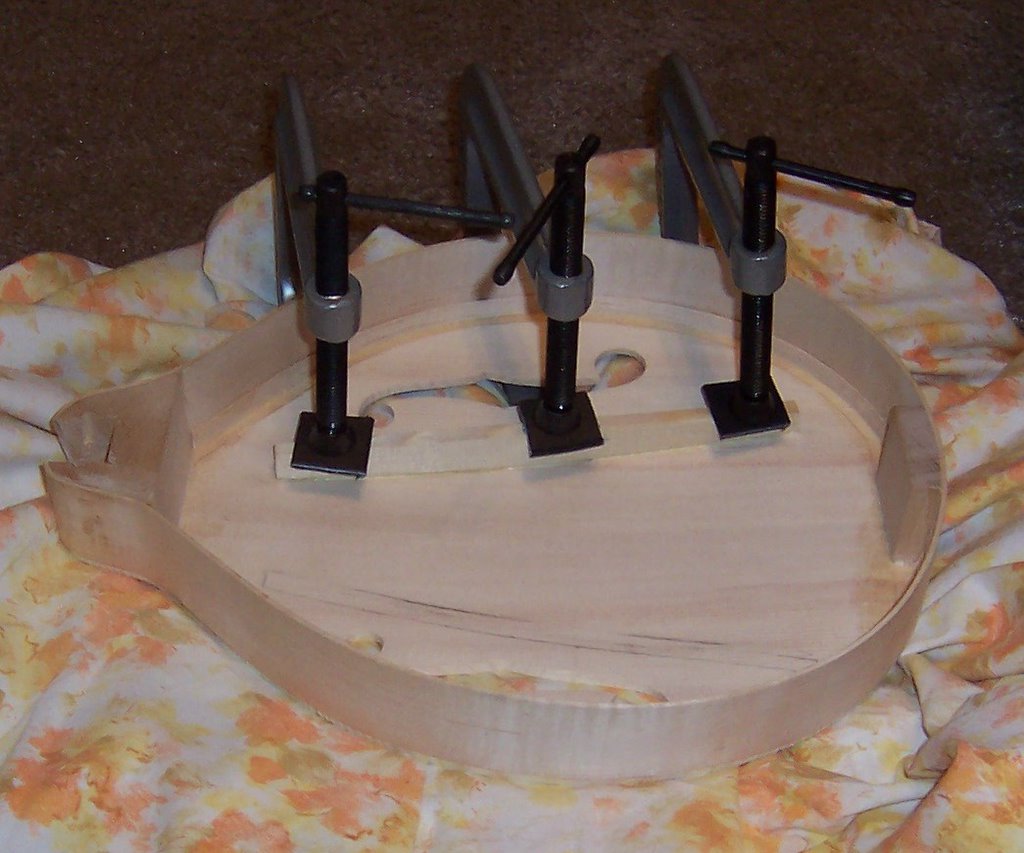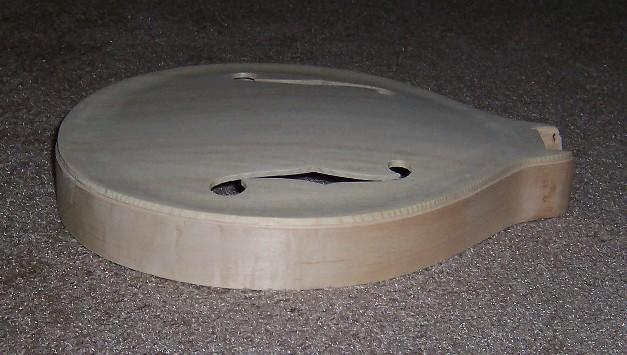Friday, November 04, 2005
I haven't worked on my mando in the last few days, but today I was able to order the following from Stew Mac- a Sloane finger plane (12mm concave), an ebony bridge as an upgrade over the one that came with my kit, a set of Schaller tuners, a 3-1/2 x 7 x 3/32 ebony headstock overlay, and two .050x1x2 white pearl inlay blanks. I printed out a few things that I want to order from Roger Siminoff's website, but I couldn't reach him in the office today so I haven't ordered yet. I may mail an order form with a money order, since I know he's a busy guy and might not be reachable on the phone anytime soon. Here's what I'm getting from Roger- #710 binding routing tool, #100 ebony inlay filler mix, and #20 bone nut blank.
I decided that I wanted to bind the top and back both, and possibly the headstock, so I spent a great deal of time researching binding materials. I read almost every post from the last year on the Cafe about binding and binding materials, and in doing so learned that the preferred material, celluloid nitrate, is no longer readily available like it once was due to the liability in handling and shipping it. Thanks to one of the posts, I learned of a good source for it- Axiom Inc (
http://www.axinc.net/). My favorite look is the white/black/white triple binding, with the ratio being 60%/20%/20%, the 20% white being closest to the body and the 60% white being on the edge of the instrument. Axiom has this, so I added a couple pieces to their shopping cart, and filled in my info so I could pay. To my surprise, when I went to check out, my total was around $45! My order was about $15, shipping was like $8, and the kicker was the $20 hazmat charge that UPS requires to handle and ship celluloid. For a luthier that makes a decent sized order, it would be no big deal, but this wasn't cost effective for me, so I cancelled my order and kept looking.
I spent a good bit more time on Stew Mac's website, and LMII's website, but couldn't really find what I was looking for. I don't want to have to laminate any binding myself. I ended up going with International Violin's white/black/white fiber binding. I read about fiber binding on the Cafe, and the few folks that have written about it say it's easy to work with, and can be glued easily with Titebond. I am anxious to see what it looks like, since International Violin doesn't show any pictures, and doesn't describe the width ratio. I'll definitely post pics on here so anyone interested can see what it looks like.
To summarize, I ordered or will be ordering everything I need to finish my mandolin. Again, many of these things are upgrades to hardware that already came with the kit. Since I'm hopefully keeping my #1 for myself, I wanted to build it with good components. Check back often for more updates, I'm going to be staying busy with this project in the next few weeks!






























